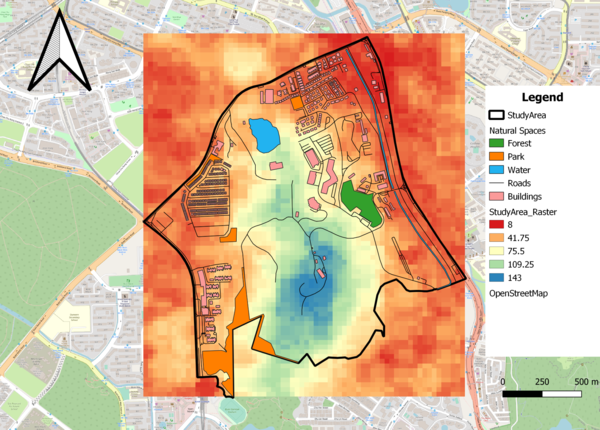SMT201 AY2019-20G2 EX2 FAN YIXI
Objective
To identify a location suitable for building a national Communicable Disease Quarantine Centre. The selected site must be located at Gombak planning subzone and with a contiguous area of at least 10,000 m2.
The Gombak planning area extracted from the “Master Plan 2014 Subzone Boundary from URA” matches the requirement as the Gombak planning area is 2459098 m2. There are a series of decision factors that we will need to take into account as well:
- Economic Factor: Selected site should avoid steep slope as construction on a steep slope will involve a lot of cut-and-fill and will lead to relatively higher development cost
- Accessibility Factor: Selected site should be close to existing local roads (service roads & tracks). This is to ensure easy transportation of building materials during the construction stage.
- Health Risk Factor: Selected site should be away from the population to avoid disease from spreading to nearby population
- Natural Conservation Factor: Selected site should be away from forested land, park and water
The following map will display the Gombak Planning Subzone with the present road networks, buildings as well as natural spaces.
Economic Factor (Slope)
Steep slopes should be avoided when choosing a suitable land for the quarantine center due to the higher development cost. From the raster map, we can see that the blue and green areas are the areas with high elevation (highest point at 145 meters above sea level) while the red and orange signifies low elevation (lowest point at 8 meters above sea level)
Accessibility Factor (Roads)
In the deciding factor, it was mentioned that only the local roads need to be accounted for. Therefore, I extracted out the service roads (blue) and tracks (yellow). There are 199 service roads and 2 tracks which will be taken into account during the analysis. From the map, we can see that the road networks in Gombak subzone is not very dense, as a result it might impact our decision as we would need to locate the center at a place that is close to the existing roads to allow for easier transportation of building materials.
Health Risk Factor (Buildings)
For the building area, I have classified the various buildings under their category (as shown in the legend). However, I did realise that there is a large percentage of buildings (95%) that did not have a “type” tied to them and therefore they fall under the “Others” category. Moving forward, we will not be categorizing the buildings anymore. We can see from the map that the South area of Gombak is not populated with buildings at all and this may be a suitable area for the quarantine center.
Natural Conservation Factor (Natural Spaces)
For the Gombak subzone, we have classified the natural spaces by 3 categories – Forest (1), Park (4) and Water (3). Similarly to the Buildings map, we can see that the South area of Gombak does not have many natural spaces which is suitable for a quarantine center as well as one of the deciding factor was for the center to be far from the natural spaces.
